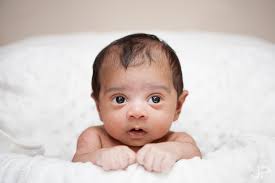About three years ago, representatives of civil society, especially those connected with education, archeology, design, and media were invited to a quiet gathering organized by the Bihar Museum Society, where a team of young experts unveiled a plan to energize the moth eaten Patna Museum into an engaging, exciting venue for education. The questions and suggestions from the invitees were answered and noted. One concern was that the proposed venue had some heritage buildings: colonial bungalows that were at least a century old. Nevertheless, the ball had been set in motion, Bihar had firmly set its face towards the future.
Even as the Central and State governments all but dismiss public interest in history, ignore their museums and allocate measly amounts for preserving the precious collections in them, Bihar conceived of an ambitious and well thought-out project to rejuvenate, rebuild, and rebrand the Patna Museum as the Bihar International Museum.
The idea was to bring the very best to in the world Bihar, to gift to the public, especially Bihar’s children a learning resource that stood up to the best international standards. After deciding to build a new museum, the State appointed Lord Cultural Resources, a Canadian museum planning consultant, to advise it..
Acting quietly, the State government conducted an international competition that brought in the best talent from around the world — including the architects involved in rebuilding the World Trade Center — to design a Rs. 500-crore new museum in Patna. A seven-member jury, including Martin Roth, Director of the Victoria & Albert Museum in London, was constituted.
Japan’s Maki & Associates and Mumbai’s Opolis Architects have developed the architectural design, which includes four core exhibition galleries, educational, lobby, administrative and a permanent gallery. The 13.5 acre campus is being developed on the ‘museum and marketplace’ concept.
The 2,000-year-old Didarganj Yakshi, one of the most popular and iconic sculptures in India, will remain the star exhibit in the new museum. Along with it, the Lohanipur Tirthankara — the earliest extant example of Jaina art — Buddhist bronzes from Nalanda, terracottas from Bodh Gaya, the Mauryan lion head and other precious artefacts will also move to the much-improved museum, now nearing completion.
Unfortunately, short sightedness, petty politics and sheer spite goaded a few to become the proverbial worms in the apple, and not long ago one such Ashok Kumar filed a public interest suit in the Patna High Court asking the state government to prove the utility of the museum and the expense of Rs 498.49 crore. This last minute attempt to stall the project failed.
The central theme is the history of Bihar and its contribution to Indian civilisation from the pre-historic era to the latter part of the 18th century. It will have the space to display most of the 40,000 artefacts stored away at the Patna Museum, which only has display space for about 2,000 of them, currently on display.
The museum will offer a world class educational tour. Visitors will first visit the orientation gallery, a mini auditorium for 2D and 3D movies which will showcase the workings and highlights of the entire museum. The Drumhouse, or children’s gallery will introduce art, culture and traditions of Bihar through interactive media. Kids will touch and feel a replica of the ancient Barabar caves of Jehanabad. The kids’ gallery has a video-gaming zone with games based on the history and culture of the state. The gallery will also have a cafeteria. The Museum is spread over three blocks with aspects too many to be described in this short piece.
Without a doubt the Bihar Museum will be one of the most significant contributions of the Nitish regime, not only conserving the rich history, culture, tradition and scientific heritage of the state, but a dynamic learning centre where people of all ages will access knowledge far beyond the scope of dry textbooks.


